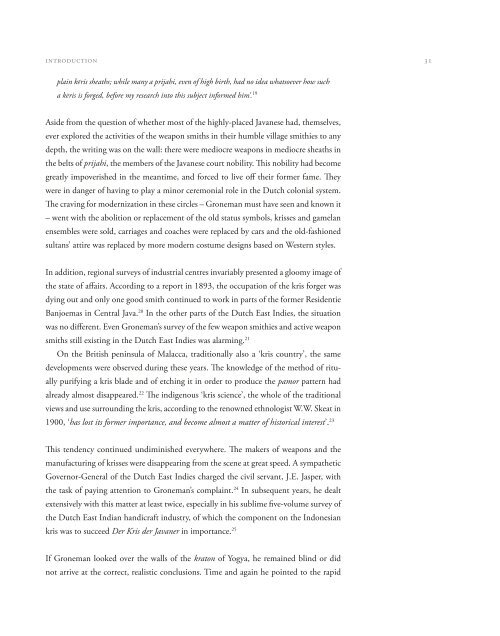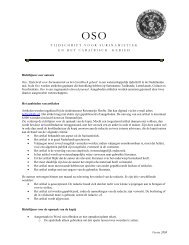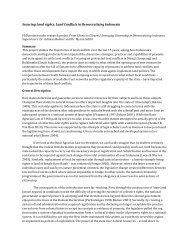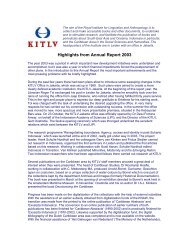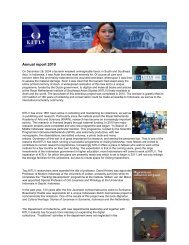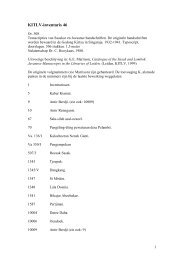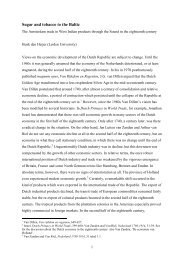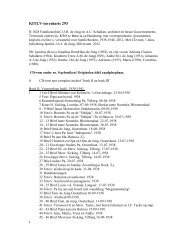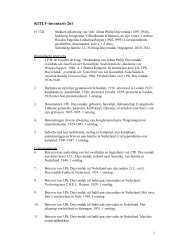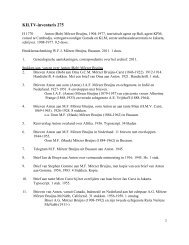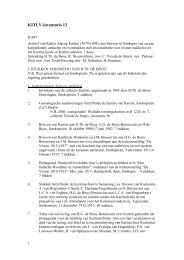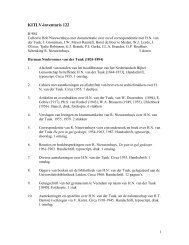Create successful ePaper yourself
Turn your PDF publications into a flip-book with our unique Google optimized e-Paper software.
introduction<br />
31<br />
plain kĕris sheaths; while many a prijahi, even of high birth, had no idea whatsoever how such<br />
a kĕris is forged, before my research into this subject informed him’. 19<br />
Aside from the question of whether most of the highly-placed Javanese had, themselves,<br />
ever explored the activities of the weapon smiths in their humble village smithies to any<br />
depth, the writing was on the wall: there were mediocre weapons in mediocre sheaths in<br />
the belts of prijahi, the members of the Javanese court nobility. This nobility had become<br />
greatly impoverished in the meantime, and forced to live off their former fame. They<br />
were in danger of having to play a minor ceremonial role in the Dutch colonial system.<br />
The craving for modernization in these circles – Groneman must have seen and known it<br />
– went with the abolition or replacement of the old status symbols, krisses and gamelan<br />
ensembles were sold, carriages and coaches were replaced by cars and the old-fashioned<br />
sultans’ attire was replaced by more modern costume designs based on Western styles.<br />
In addition, regional surveys of industrial centres invariably presented a gloomy image of<br />
the state of affairs. According to a report in 1893, the occupation of the kris forger was<br />
dying out and only one good smith continued to work in parts of the former Residentie<br />
Banjoemas in Central Java. 20 In the other parts of the Dutch East Indies, the situation<br />
was no different. Even Groneman’s survey of the few weapon smithies and active weapon<br />
smiths still existing in the Dutch East Indies was alarming. 21<br />
On the British peninsula of Malacca, traditionally also a ‘kris country’, the same<br />
developments were observed during these years. The knowledge of the method of ritually<br />
purifying a kris blade and of etching it in order to produce the pamor pattern had<br />
already almost disappeared. 22 The indigenous ‘kris science’, the whole of the traditional<br />
views and use surrounding the kris, according to the renowned ethnologist W.W. Skeat in<br />
1900, ‘has lost its former importance, and become almost a matter of historical interest’. 23<br />
This tendency continued undiminished everywhere. The makers of weapons and the<br />
manufacturing of krisses were disappearing from the scene at great speed. A sympathetic<br />
Governor-General of the Dutch East Indies charged the civil servant, J.E. Jasper, with<br />
the task of paying attention to Groneman’s complaint. 24 In subsequent years, he dealt<br />
extensively with this matter at least twice, especially in his sublime five-volume survey of<br />
the Dutch East Indian handicraft industry, of which the component on the Indonesian<br />
kris was to succeed Der Kris der Javaner in importance. 25<br />
If Groneman looked over the walls of the kraton of Yogya, he remained blind or did<br />
not arrive at the correct, realistic conclusions. Time and again he pointed to the rapid


